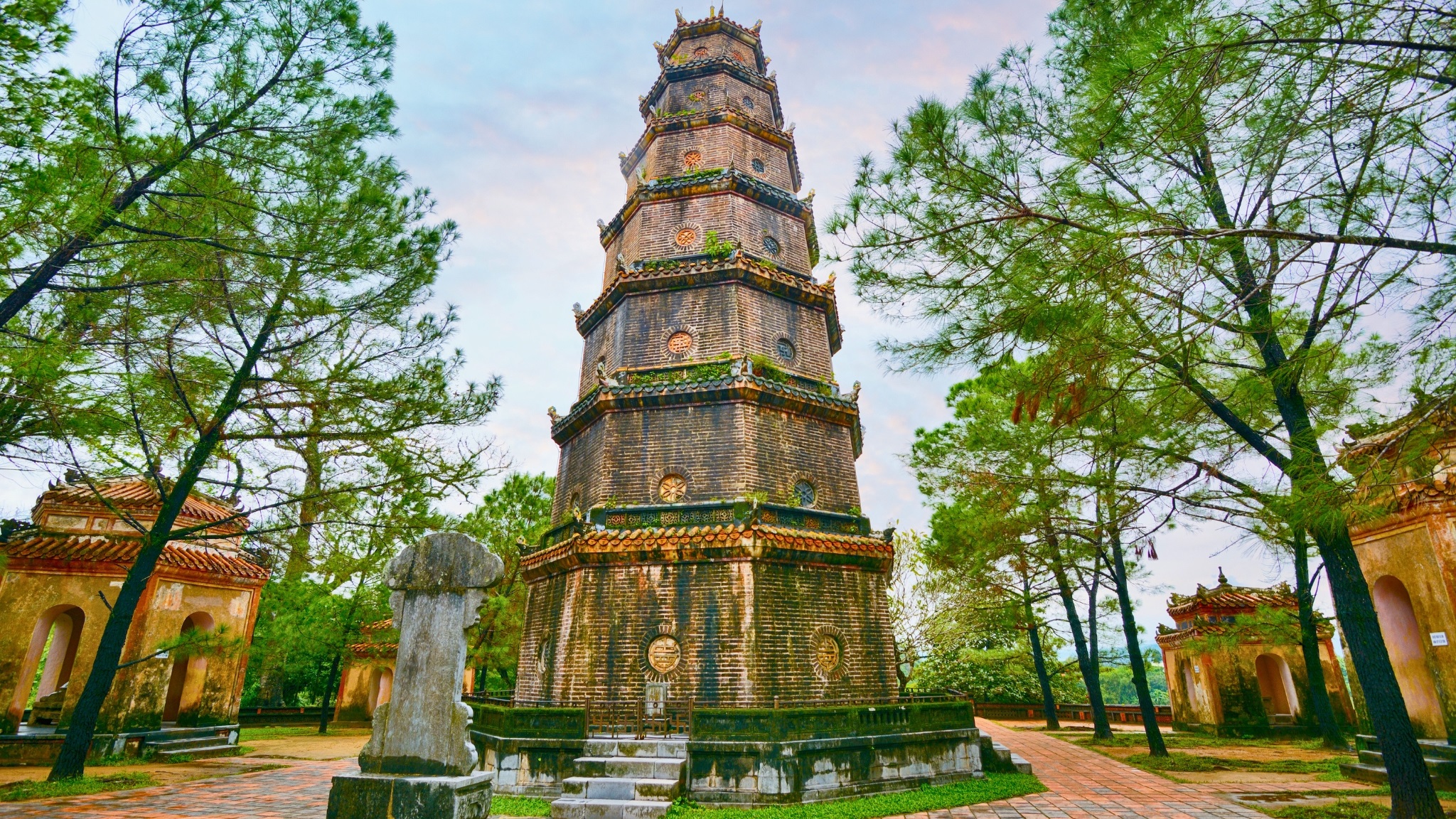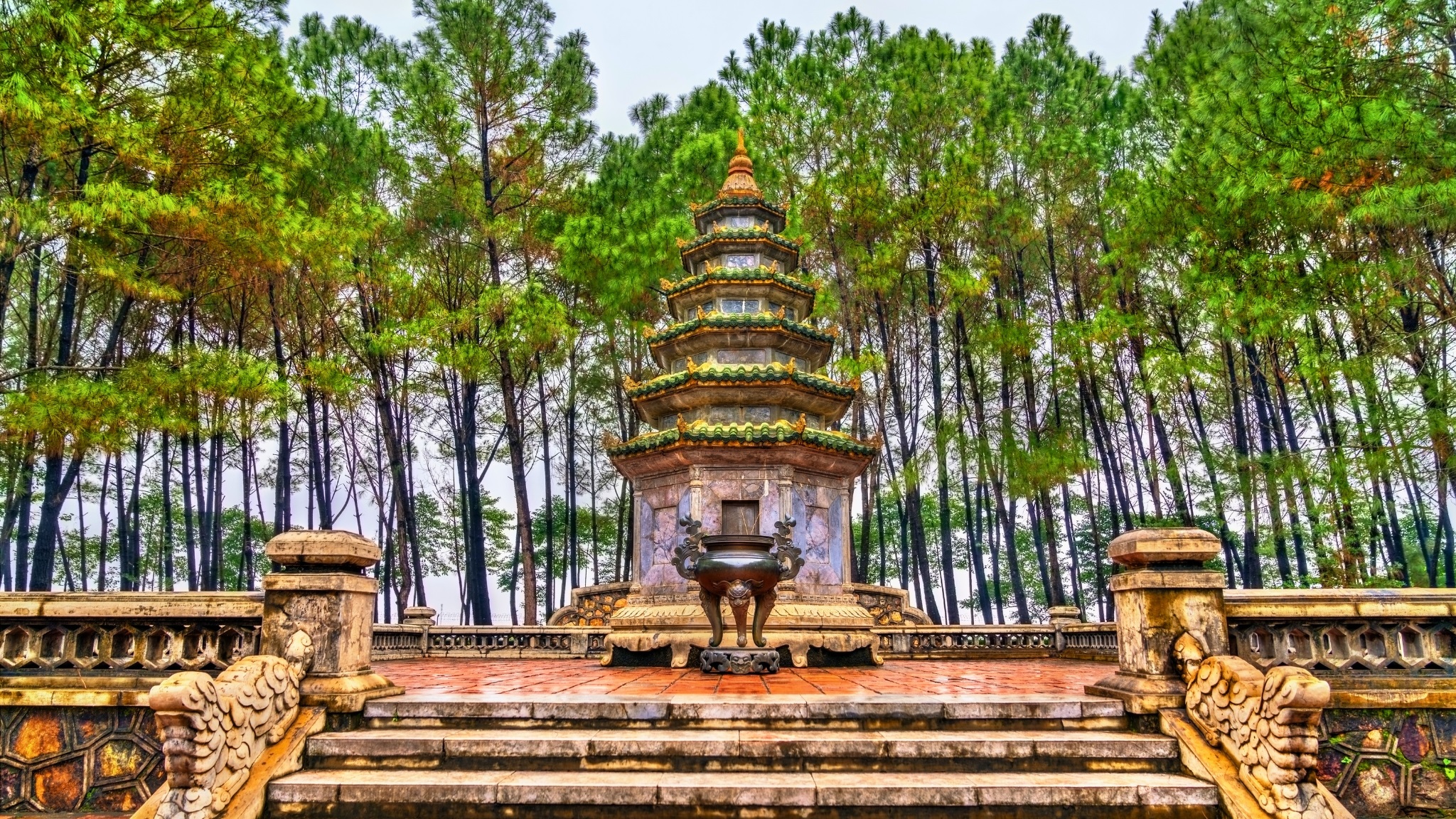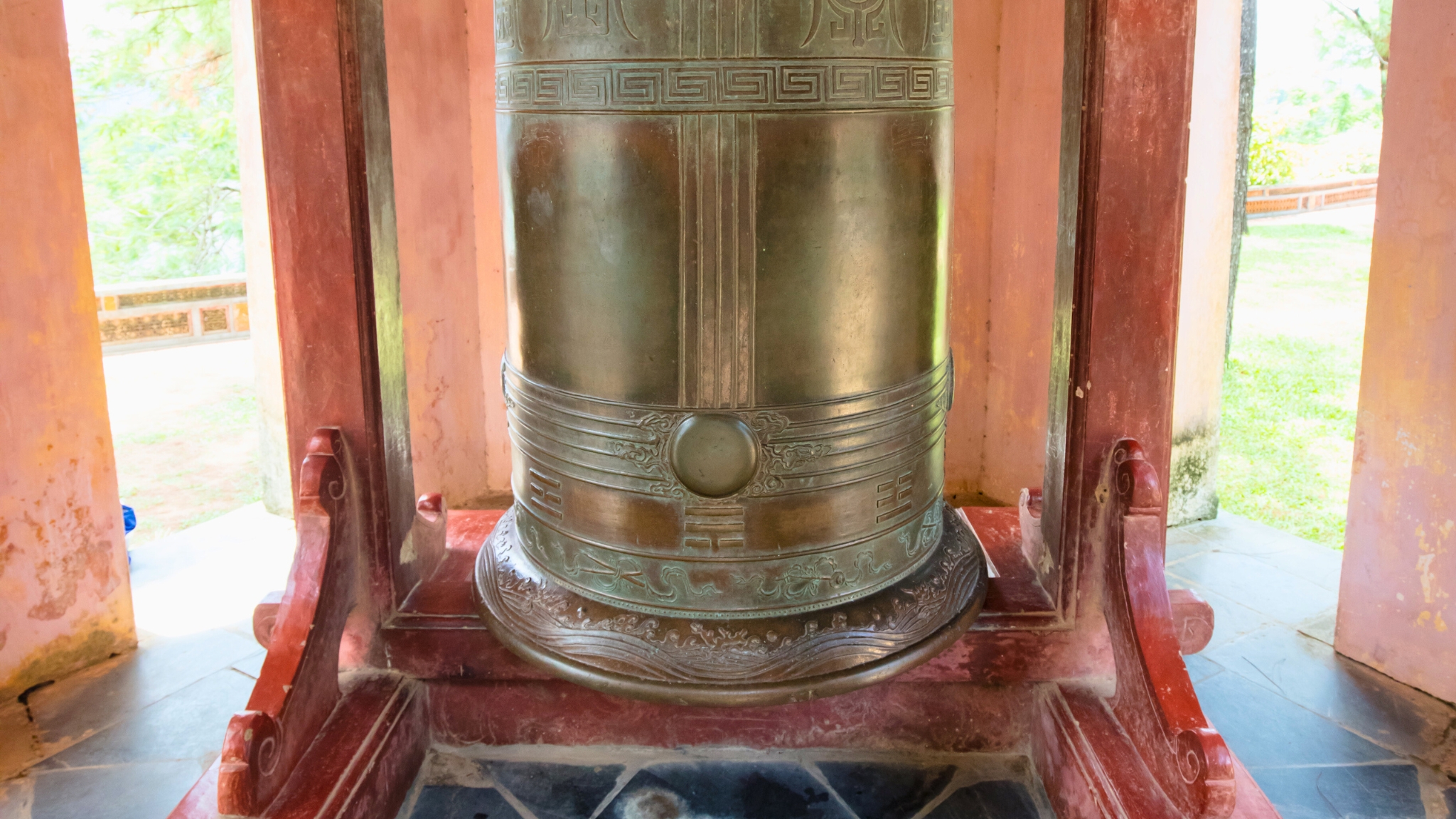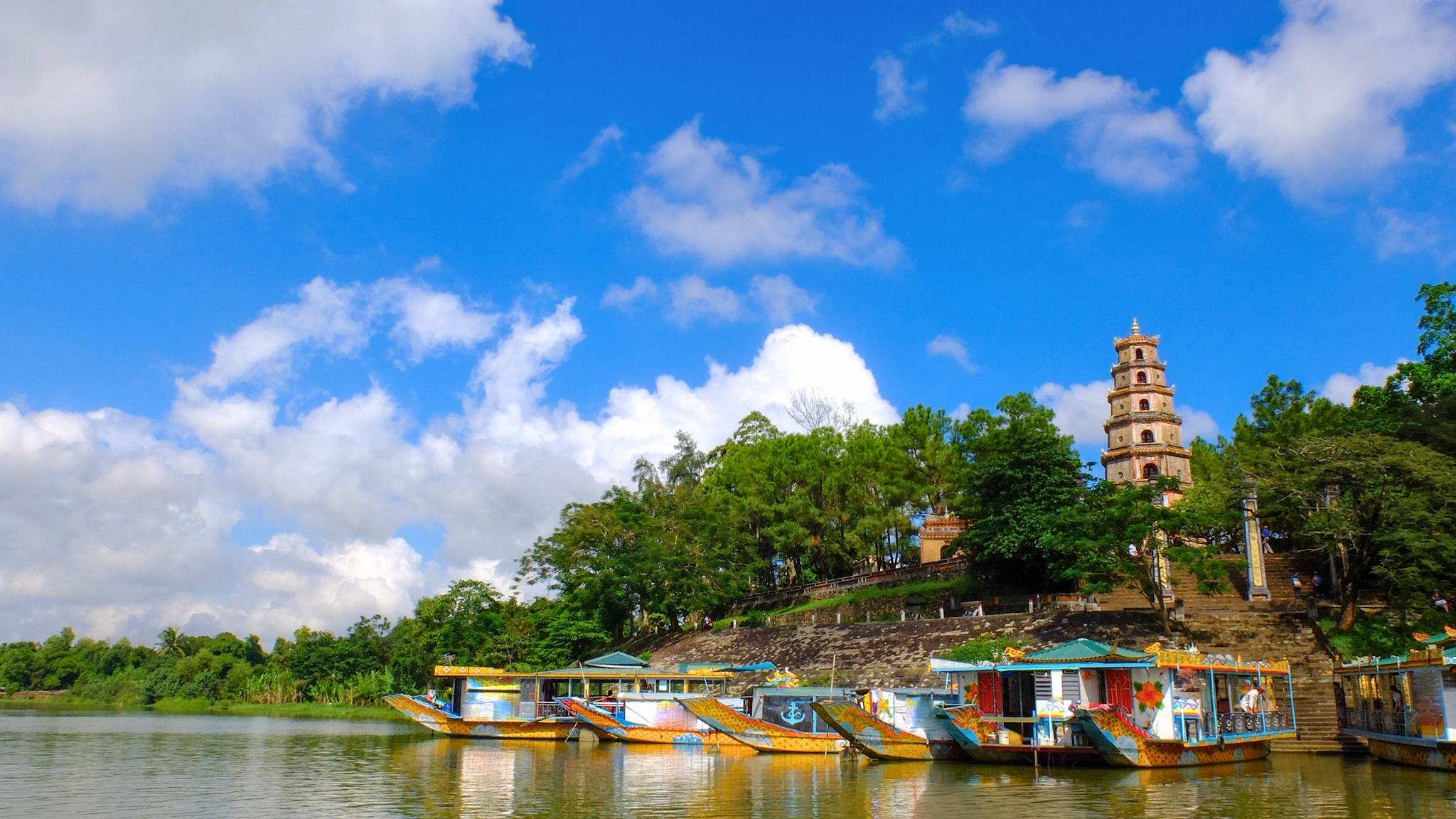Thien Mu Pagoda - Hue's Symbol of Cultural Heritage
Thien Mu Pagoda has always been among Vietnam's top destinations for foreign tourists. It is not just a historical landmark but a sanctuary for the soul, a place where tranquility meets spirituality.
Ready to uncover over 400 years of captivating heritage? In this ultimate guide, we’ll lead you through hidden corners most tourists miss and help you experience this iconic pagoda thoroughly.

Overview Of Thien Mu Pagoda
Here are some general information about Thien Mu Pagoda:
- Address: The pagoda is at Kim Long Road, Huong Long Village, Hue, Thua Thien Hue.
- Opening Hours: From 08:00 to 18:00 daily.
- Ticket Price: Entrance to Thien Mu Pagoda is free.
Thien Mu Pagoda, also known as Linh Mu Pagoda, was built by Lord Nguyen Hoang in 1601 and is also the earliest pagoda built in Hue. When the lord came to guard Thuan Hoa, he inspected the terrain to prepare for building the fortune of the Nguyen family.
While riding along the Perfume River, he encountered a small hill called Ha Khe. The lord decided to build a pagoda overlooking the river on the mountain and named it Thien Mu, meaning "Celestial Lady."

The Stunning Beauty Of Thien Mu Pagoda
Coming to Thien Mu Pagoda, you will be surprised by the poetic natural scenery. Viewed from above, the whole hill looks like a giant turtle carrying the stupa on its back.
Surrounding the tower are rows of ancient green trees and lotus ponds, giving visitors an indescribable feeling of peace.
What To See At Thien Mu Pagoda
Thien Mu Pagoda is one of the largest pagodas in Central Vietnam having the typical beauty of Hue culture and a blend of Asian and Western elements.
Here are the top highlights of what you can see at Thien Mu Pagoda:
Phuoc Duyen Tower
With its breathtaking views of the Perfume River, Phuoc Duyen Tower is a must-visit attraction for any visitor in Hue. This 68-foot-tall octagonal building is rather impressive when seen from a hilltop location.
The tower is stunning, but that's not all it offers. Its elaborate carvings tell stories of long-lost customs and beliefs through representations of mythological beasts like dragons and phoenixes.

Phuoc Duyen Tower Is The Most Prominent Structure In Thien Mu Pagoda
Tam Quan Gate
Tam Quan Gate is considered the main gate of Thien Mu Pagoda. It has a 2-storey structure, 8 roofs and 3 walkways. At each entrance through the gate, there is a wooden door guarded by guardian statues on both sides.
The gate's defining feature is its triple archway, symbolizing the Three Jewels of Buddhism: Buddha, Dharma (teachings), and Sangha (community).
Each way invites you to enter the pagoda with mindfulness and respect. Stepping through the Tam Quan gate, you will admire 12 giant wooden sculptures of temple guardians.

Tam Quan Gate Has The Most Surprising Architectural Wonders
Linh Mu Bell
Immerse yourself in the serene courtyards as you listen to the resounding chimes of the Linh Mu Bell. At a whopping 12 tonnes, this enormous bronze bell is a magnificent monument to Hue's long history and storied customs.
The loud, resonant tones of the bell, cast in 1710, have signaled the passing of time and the beginning of significant occasions for generations.

The Great Bell of Thien Mu Pagoda
Dai Hung Shrine
Dai Hung Shrine, also known as the Main Sanctuary Hall, is the heart and soul of Thien Mu Pagoda. The shrine has a snail-like architecture, with the columns poured with concrete and covered with a layer of wood-imitation paint.
Inside is a statue of Maitreya Buddha, above which hangs a horizontal panel engraved with the four words "Linh Thuu Cao Phong".
In addition, Dai Hung Shrine also displays a giant bronze bell 2.5m high, weighing more than 2 tons. Going deep inside, you will admire the statues of Tam Buddha - the symbols of the past, present, and future lives.

Prepare To Have Your Senses And Soul Awakened At Dai Hung Shrine
How to get there from Hue City
Because Thien Mu Pagoda is only 5km from the city center, moving is very simple. Here are some ways for you to reach there:
Cyclo
Price: From 100000 VND (~US $4.5)
This is the most relaxing and scenic way to travel, allowing you to soak in the sights and sounds of Hue's streets. Cyclo drivers are readily available in the city center, and the ride to Thien Mu Pagoda takes about 30 minutes.
Motorbike Taxi (Xe Om)
Price: From 40000 VND (~US $1.6)
It’s the fastest and most convenient option, especially if you're short on time. You can hail a Xe Om anywhere in Hue, and the ride to Thien Mu Pagoda takes about 15-20 minutes.
Dragon Boat
Price: From 400000 VND (~US $16.5)
This adventurous and romantic option offers stunning Perfume River views. Dragon boats depart from various piers along the riverbank in Hue, with the trip to the pagoda taking about 30-45 minutes.

Immerse Yourself In The Picturesque Landscape On A Dragon Boat
Explore Nearby Destinations
Thien Mu Pagoda's allure extends beyond its own walls. If you're looking for activities to do in the area that will compliment your visit to the pagoda, consider these suggestions:
Hue Citadel
- Opening hours: Open every day. In the summer, it’s open from 6:30 to 17:30; in the winter, it’s available from 7:00 to 17:00
- Distance from Thien Mu Pagoda: 4 km away from the Thien Mu Pagoda
- Address: 23/8 Street, Thuan Hoa Ward, Hue City, Thua Thien Hue Province
- Ticket price: 360.000 VND per customer
Hue Citadel is a colossal dragon slumbering on the Perfume River. While here, you can explore the ancient seat of Vietnam's Nguyen Dynasty, where emperors ruled from opulent palaces within a maze of fortified walls.
Also, take your time to marvel at the iconic Flag Tower - a symbol of Hue's resilience.

Feel The Weight Of History In Every Step Of Hue Citadel
Minh Mang Tomb
- Opening hours: Everday from 7:30 to 17:00
- Distance from Thien Mu Pagoda: 12 km away from the Thien Mu Pagoda
- Address: Huong Tho, Huong Tra, Hue City, Thua Thien Hue Province
- Ticket price: 150.000 VND per customer
The Minh Mang Tomb is the final resting place of the second emperor of the Nguyen Dynasty, Emperor Minh Mang. The tomb is part of a complex with a lake, beautiful gardens, and many buildings and pavilions.
Once you reach here, you will be overwhelmed by the Dai Hong Mon - the 12-meter main gate to the mausoleum.

The Tranquil Ambience Of Minh Mang Tomb Will Entice You Immediately
Local tips
While visiting Thien Mu Pagoda, we suggest you know these local tips to enhance your experience:
Dress respectfully
Cover your shoulders and knees, as it is an active place of Buddhist worship. You should avoid tight-fitting clothing as it can be considered disrespectful in a religious setting. Neutral colors would be the best for visiting the pagoda.
Travel time
You should visit the pagoda in the dry season, from February to April and September to November. During these months, the weather is pleasant and sunny, with low humidity. The crowds are also smaller during these times.
Hire a local guide
They can share hidden gems, historical insights, and cultural nuances you might miss, and also assist in communicating with locals and ensure a smooth and enjoyable experience.
Plan your visit today and embark on a soulful journey of discovery. Book your trip now!
Trip that visit Thien Mu Pagoda - Hue's Symbol of Cultural Heritage



